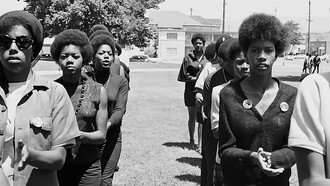No photos of this ship have been found but its real and confirmed name was Venezuela, denoted by its records as well as its large signs to port, starboard, and stern. It was a 6,991-tonne freighter manufactured in the Swedish shipyards in Gothenburg in 1939. They were owned by Mr. Axel Johnson and his Stockholm-based company Rederi that transported goods from Europe to South America. It was perhaps named after the country that it would have as a destination, who knows! It was barely two years old when it was attacked.
April 17, 1941. The ship Venezuela had a cargo of paper pulp in its warehouse. Its destiny was Rio de Janeiro and Buenos Aires. The exporting country (Sweden), as well as the client nations in Latin America, were neutral during the conflict that shook the world. However, it caught them. Around 4 a.m. the German submarine U123 sighted the Swedish ship in the middle of the North Atlantic. The freighter sailed alone and without an escort relying on its non-belligerent flag. Its captain made a serious mistake when traveling outside the routes of neutral countries, perhaps because he wanted to reach his destination earlier. The cost would be enormous.
The attacker, an U123, was a class IXB submarine and it was a veteran hunter in the Nazi navy. It would manage to sink 42 ships that would total 209,800 tons sent to the bottom of the ocean. It was not destroyed by the allies, reaching seventh place among the most cited Uboots. It also survived all twelve patrols sailed and eleven attacks, being withdrawn in 1944. Two years later and after the war, it went to the French navy under the name Blaison. Hence the abundant information about that ship which even has a video on YouTube. The captain of the Uboat Karl-Heinz Moehle was one of the few Kriegsmarine officers tried in Nuremberg and sentenced to 5 years in prison.
The ship Venezuela had already had an encounter with the aftermath of the War. It was on March 26 when they rescued eight Finns from the merchant ship Charoline Thorden sunk by a German Heinkel He115 seaplane near the Faroe Islands. Despite this, Venezuela continued on its dangerous path.
Inside the U123, Captain Moehle followed Venezuela until 3:30 p.m. when despite doubts about not recognizing the flag, he decided to attack. He ordered to fire a single G7a torpedo, a typical cylinder that leaves a trail of bubbles on its way to the target. The torpedo hit the ship on its front left side and Venezuela began to sink slowly, the men on board began to descend into the lifeboats.
Moehle, seeing that it was not sinking, fired another torpedo at 4 p.m. but missed, firing two more at 4:26 p.m. which hit the engine room. Despite the blows, the freighter did not sink. At 5:27 p.m. another torpedo was launched which also missed. When the submarine recharged its tubes, it emerged two hours later and scanned the horizon to verify or collect survivors, Venezuela was no longer on the sight and its entire crew of 49 souls had disappeared in the cold waters.
Reference
Williamson, G. 2007. U-boats vs Destroyers. The Battle of the Atlantic.















